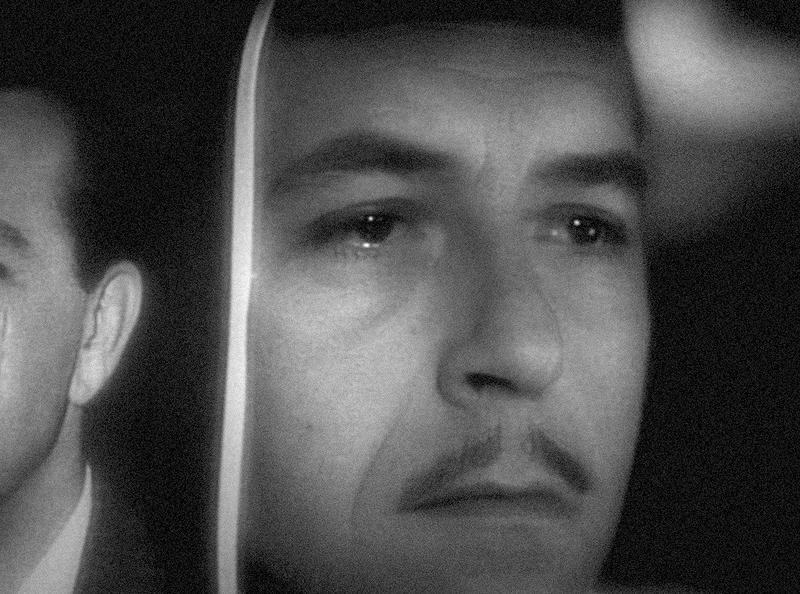Identification by means of a portrait photograph plays a paradoxical role in modern surveillance: while many historians of police techniques have made reference to the statistical turning point represented by Alphonse Bertillon’s forensic anthropometry, the portrait photograph continued to be used alongside the dimensions of the human body on identification sheets at the start of the 20th century. In parallel, the cinema made photography a means to steal identity. Three early films dwelt on the techniques used to alter one’s looks by changing one’s facial appearance before the camera. Later, in Hollow Triumph (Steve Sekeley, 1948), a photograph is used as the basis for a gangster on the run to alter his facial appearance.The study of these cases gives an overview of image-mediated surveillance techniques and suggests how the image can, from within, undermine the indexical potential of representation.

Steve Sekeley, Hollow Triumph, États-Unis, 1948, 1 h 23 min, arrêt sur image. © DR
Rémi Lauvin holds a doctorate from the University of Paris and author of La Contrefaçon de soi. Le cinéma à l’épreuve de la surveillance (forthcoming from Mimésis). A recipient of the Balzan post-doctoral fellowship at Sorbonne Nouvelle University in 2022–23, his articles have been published in the journals Intermédialités, Sociétés et Représentations, InMedia and Débordements. His research focuses on the reworking and misuse of surveillance cues and techniques in cinema. He teaches at the University of Sorbonne Nouvelle, the Institut Catholique de Paris and the University of Picardie-Jules Verne.
Keywords: portrait, surveillance, forensic anthropometry, early cinema, identification, disfigurement
Citation: Rémi Lauvin, « L’identification du portrait photographique au regard du cinéma », Transbordeur. Photographie histoire société, no. 8, 2024, pp. 142-153.